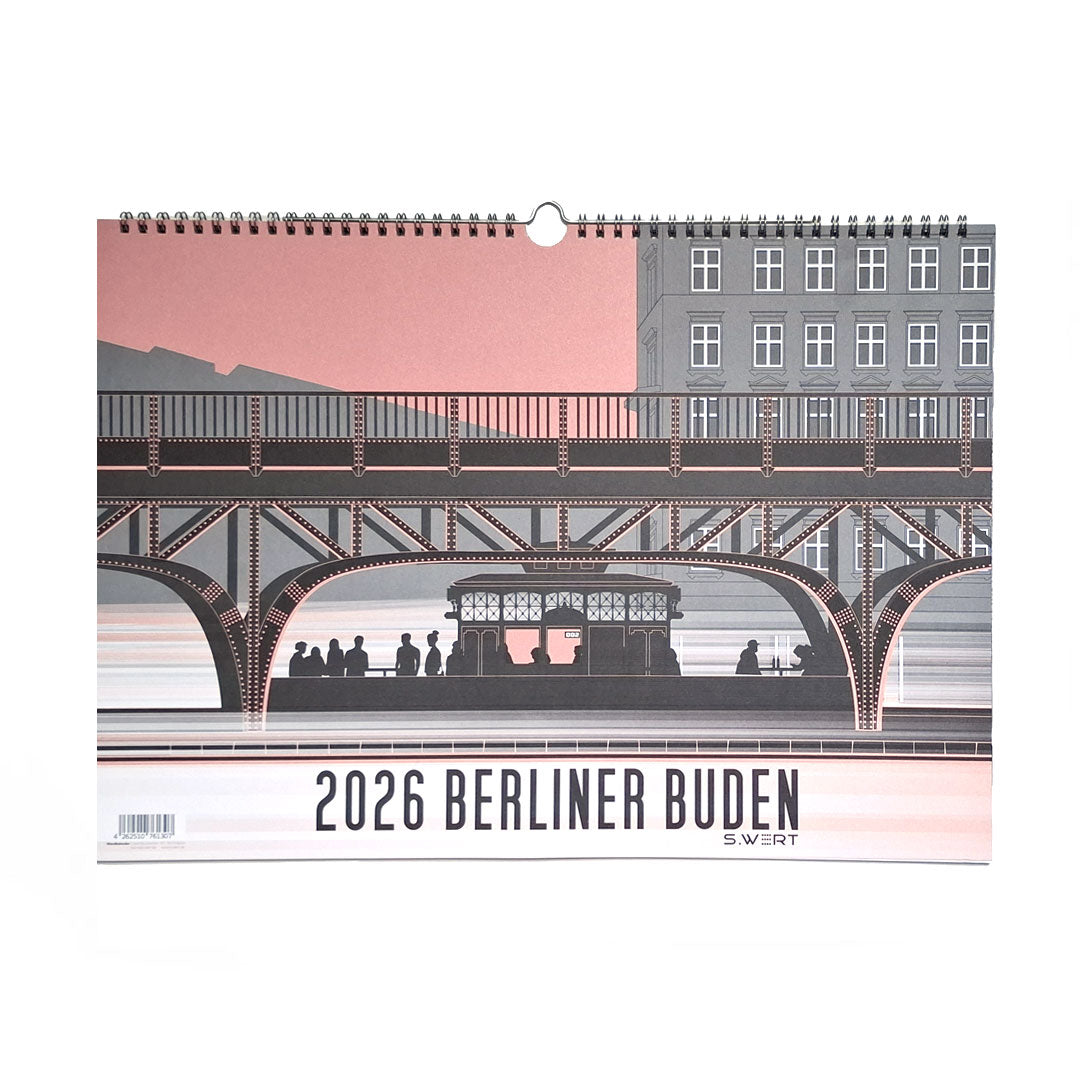
Berlin stalls: s.wert calendar 2026
shares
Berlin Buden: An architectural tour through Berlin's kiosk and snack bar culture in the s.wert design calendar 2026
Berlin's soul is often revealed, especially in the smallest details. A prime example of this are Berlin's kiosks and snack bars. They are not just places for quick enjoyment, but also witnesses to the times, meeting places, and often surprisingly striking buildings. For our 2026 wall calendar, we have brought these everyday icons and their peculiarities into focus.

January: Pavilion Hardenbergplatz
The first pavilion on Hardenbergplatz , designed by Arno Bonanni in 1987, kicks things off. Originally planned as a convenience store, it is now a popular spot for drinks and snacks. Its clear design language and striking roof structure are typical of the late 1980s and blend harmoniously into the surroundings of the Zoological Garden.

February: Café Achteck
In February, we're taking a look at a true Berlin original: Café Achteck . Designed by Carl Theodor Rospatt in 1878, it's a classic urinal that was later converted into a snack bar. Today, it houses the famous Burgermeister (since 2006) and demonstrates how a historic building can find new uses without losing its charm. Here, the surrounding area, the subway bridge, comes into the picture, giving Café Achteck its special setting.

March: Kiosk at Steinplatz
Another masterpiece of the early 20th century is the kiosk at Steinplatz , designed in 1905 by none other than Alfred Grenander . Grenander, known for his subway stations, demonstrated his flair for functional aesthetics here as well. Since 2025, the site has housed the Palast Kiosk , which combines art and snacks.

April: Rabbit Tavern
The Hasenschänke (1955-1958) by Kurt Pöthig is a charming example of organic architecture of the 1950s. With its curved form and large windows, it blends seamlessly into the landscape. Soups, cakes, and drinks invite you to linger.

May: Berlin Pavilion
The Berlin Pavilion , designed by Fehling, Gogel, and Pfankuch in 1957, represents postwar modernism. Its floating architecture and generous glass surfaces reflect the optimism of the 1950s. Since 2005, it has served as a Burger King restaurant .

June: Trinkhalle Richardplatz
In June, we'll be focusing on the Trinkhalle (pub hall) at Richardplatz , built in 1910 by Reinhold Kiehl . Kiehl, a well-known Berlin architect, created a kiosk that elegantly blends into the Richardplatz ensemble. Since 2010, it has served as a snack bar and kiosk , offering currywurst and fries.

July: Snack Oasis
The Imbiss Oase, built in 2008, may not be architecturally anything special, but its appearance is firmly anchored in Berlin's cityscape. Whether it's kebabs, currywurst, or crispy duck, it's an example of the pragmatic yet essential architecture of fast food.

August: Savignyplatz drinking hall
In August, we discover another gem by Alfred Grenander : the Trinkhalle on Savignyplatz, dating from 1904. Its delicate iron construction and curved lines are typical of Art Nouveau. Since 2006, it has been known as Hasenecke (Hasenecke) and provides passersby with classic Berlin currywurst and other delicacies.

September: Treptower Park
September shows us booths where the surroundings play a major role: Treptower Park with the Allianz Tower in the background.

October: Mustafa's Vegetable Kebab
Since 2005 , Mustafa's Gemüse Kebap on Mehringdamm has been an institution and a pilgrimage site for kebab lovers. The simple stall and the queue in front of it have developed into a cult following through word of mouth. In the summer of 2025, the iconic snack bar relocated to the opposite side.

November: Konnopke's Imbiss
Konnopke's Imbiss , located in Prenzlauer Berg since 1960, is a true legend. Even after Uwe Schmidtmann 's 2011 renovation, the original spirit has been preserved. Here, not only the architecture but also the history and tradition of the currywurst take center stage – a true piece of Berlin identity. We've included a "mistake" in our graphic—can you spot it?

December: Snack bars on Unter den Linden
The final section is the Unter den Linden snack bars , designed by Josef Paul Kleihues in 2001. Known for his classic-modern design language, Kleihues created elegant structures that blend harmoniously into the historic ambience.

Each month in our 2026 calendar invites you to rediscover the connection between architecture, history, and everyday life in Berlin . The A3-sized wall calendar is printed on thick recycled paper using Pantone printing. The clean lines and minimalist aesthetic of our two-color prints in pink, black, and white emphasize the beauty of these often overlooked buildings. Slight color variations may occur due to production reasons.